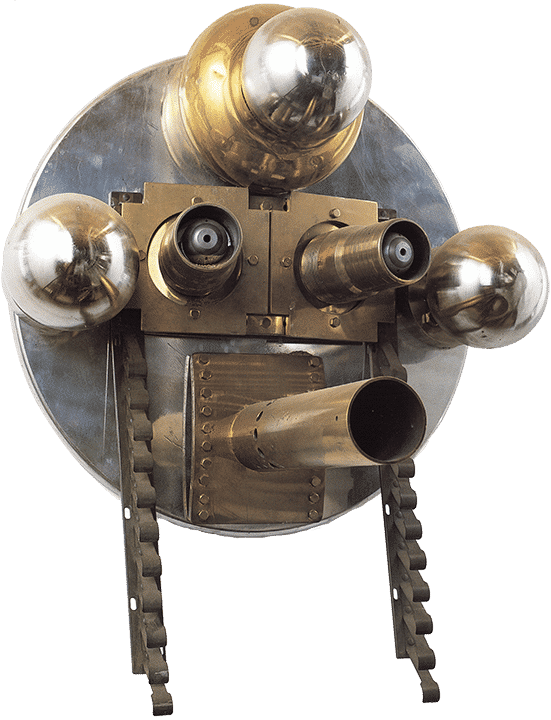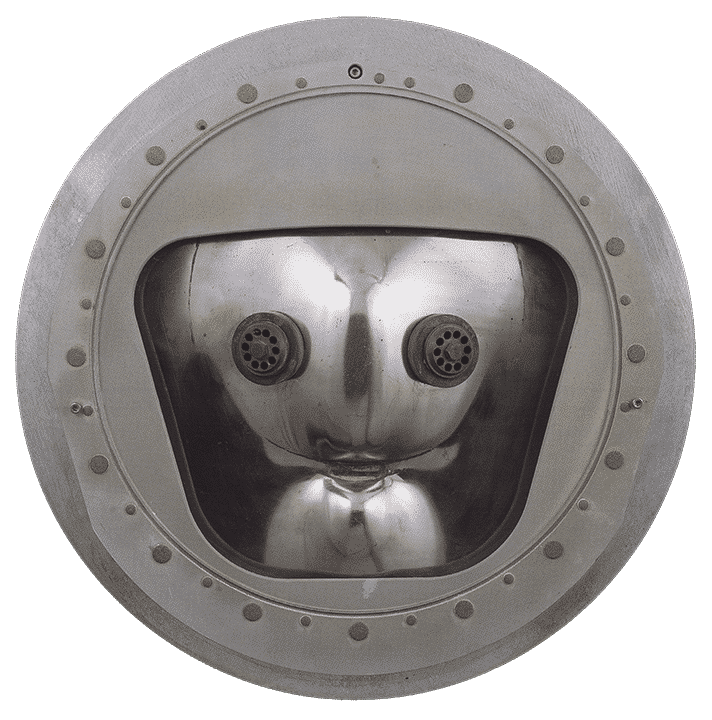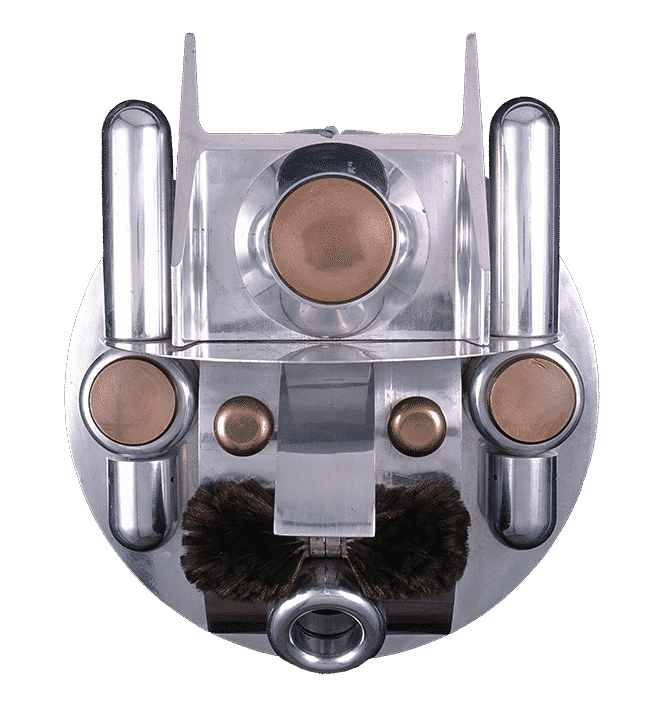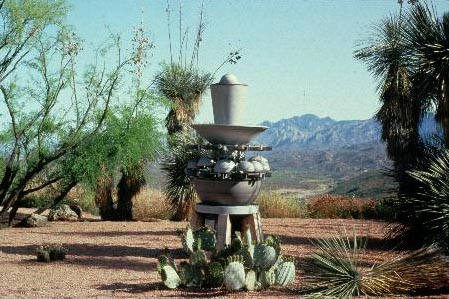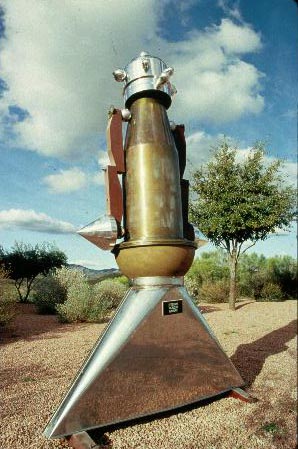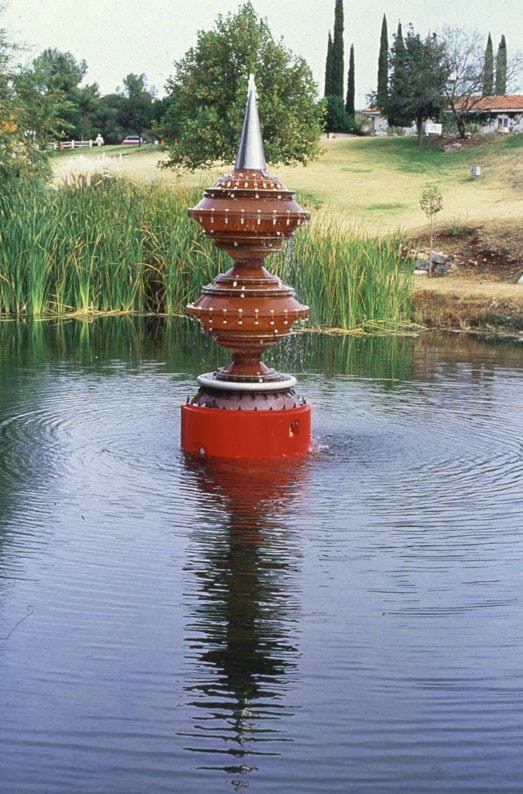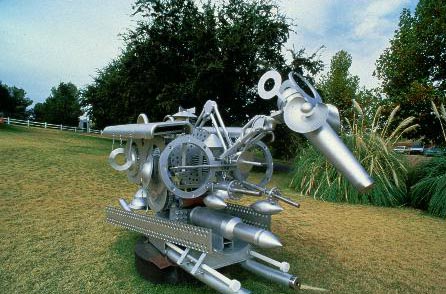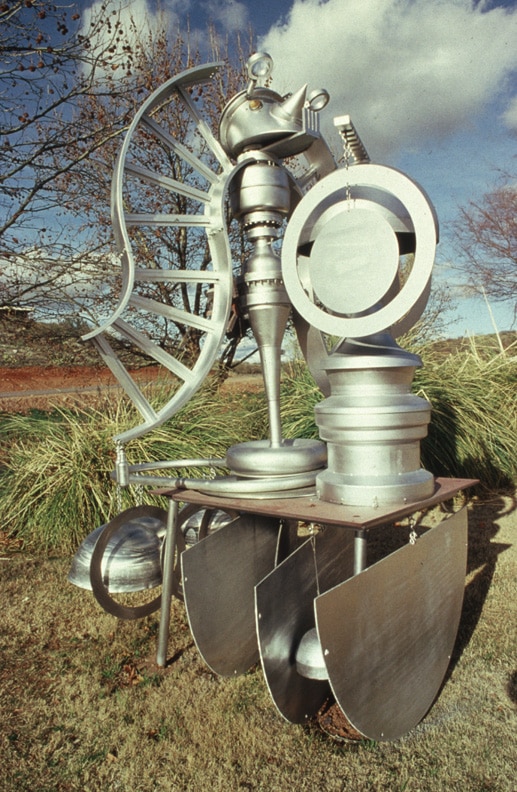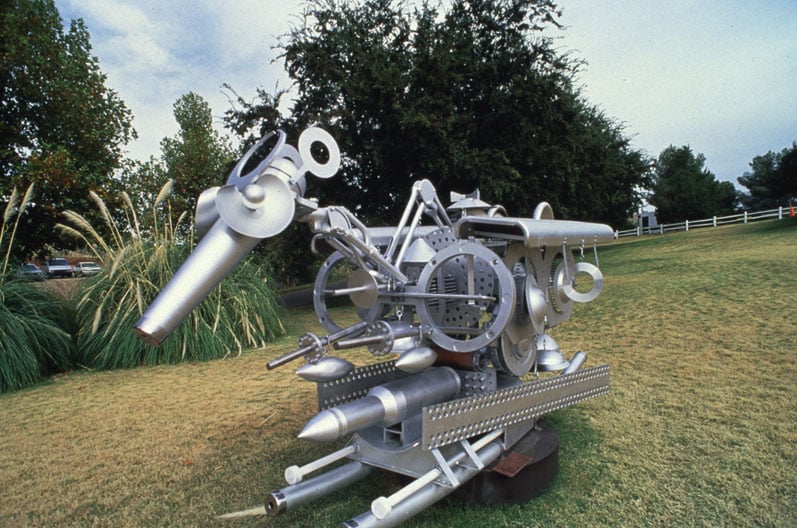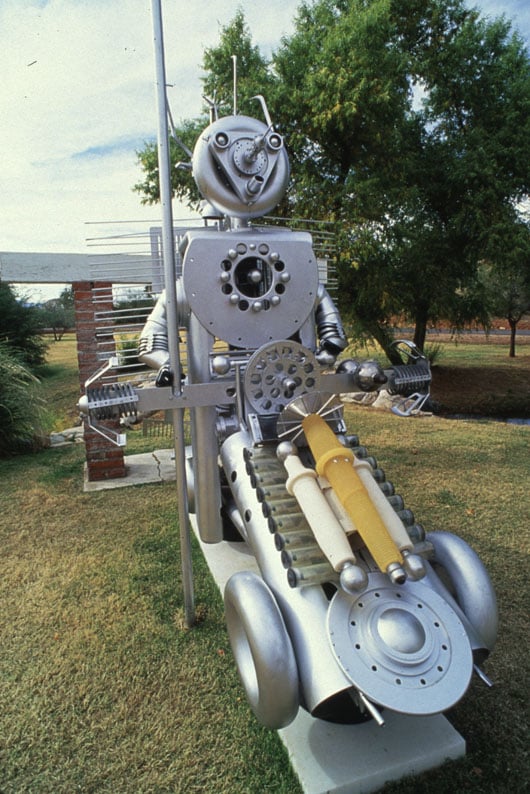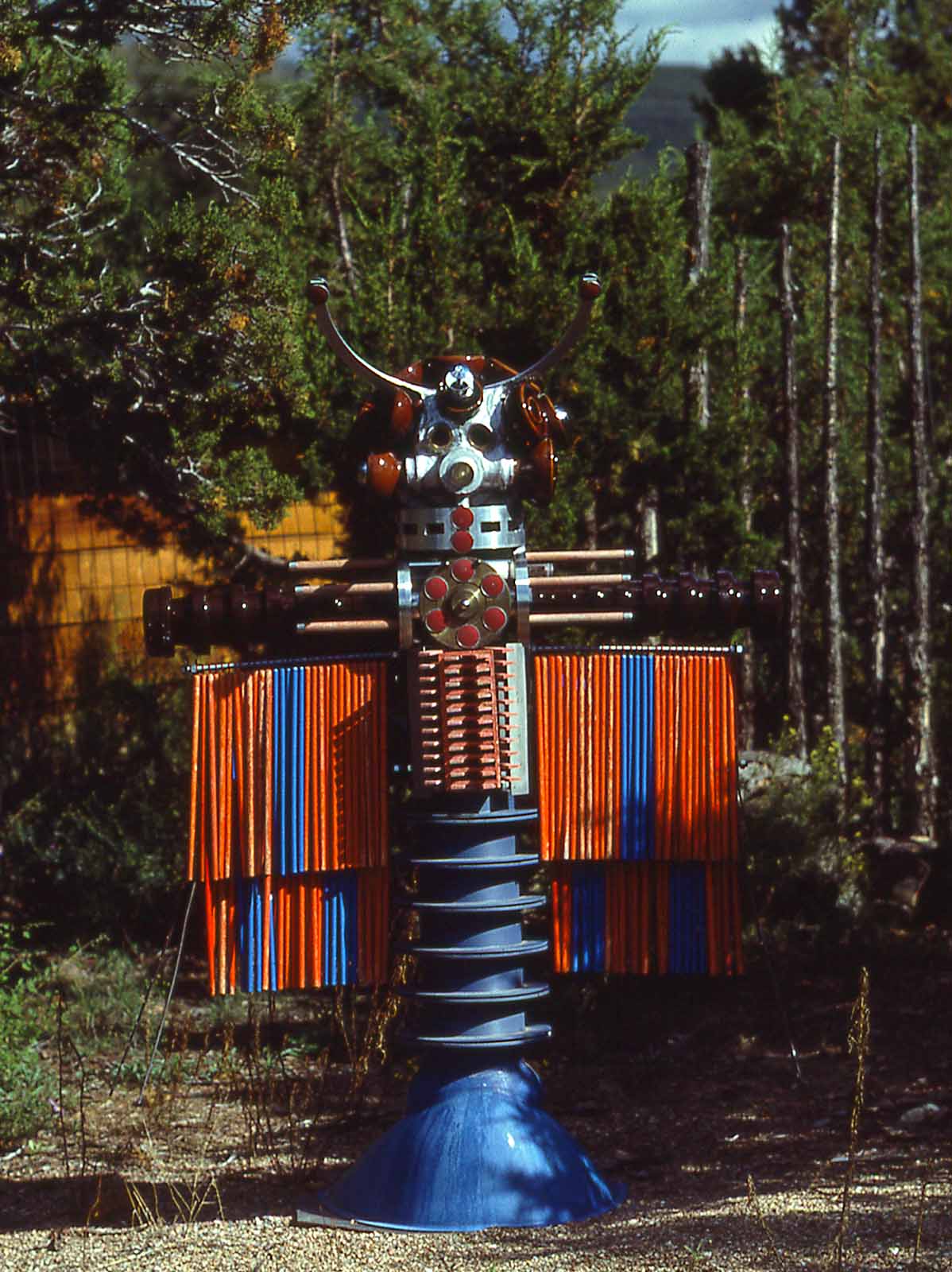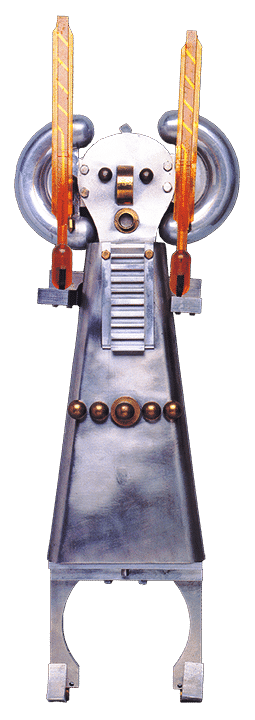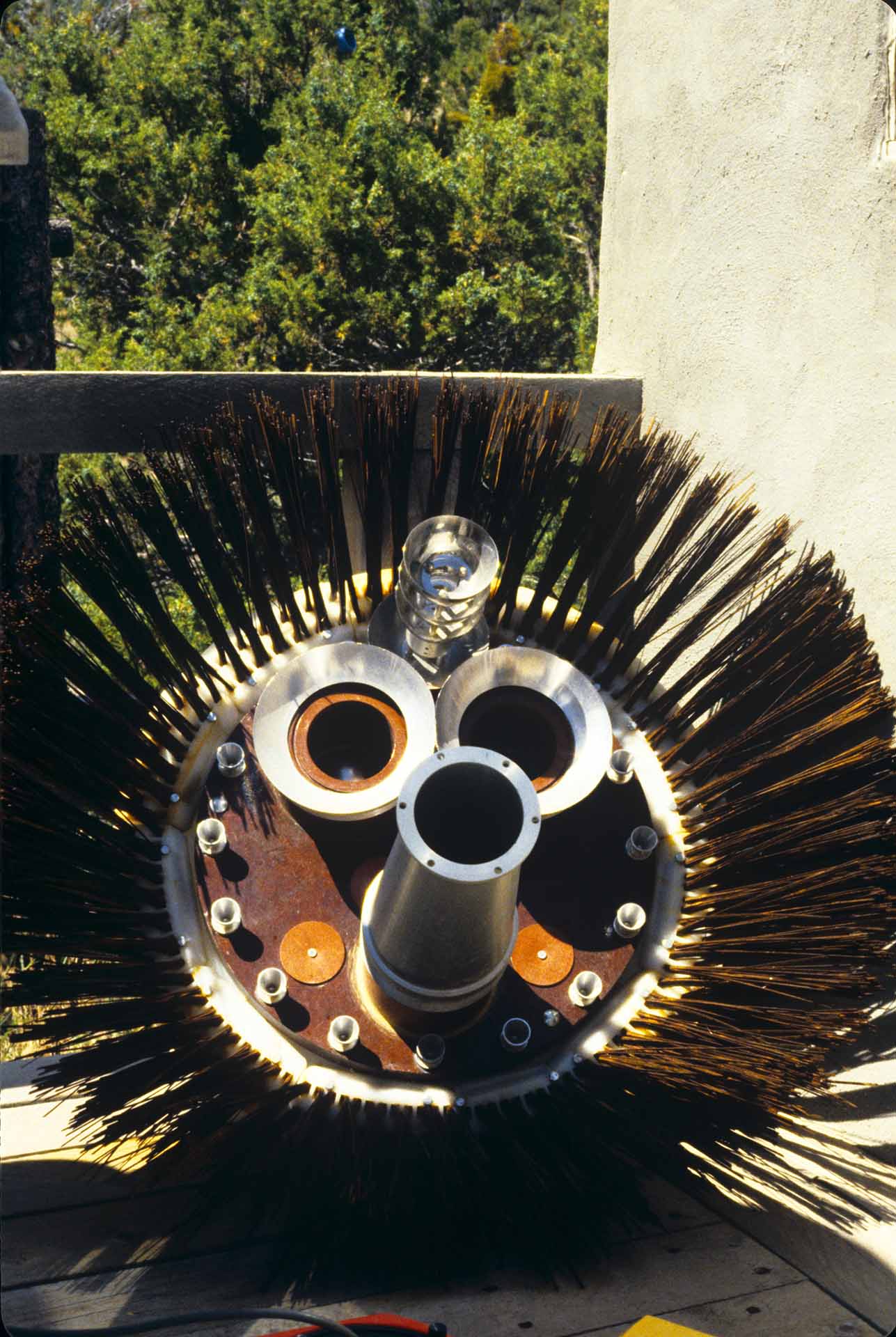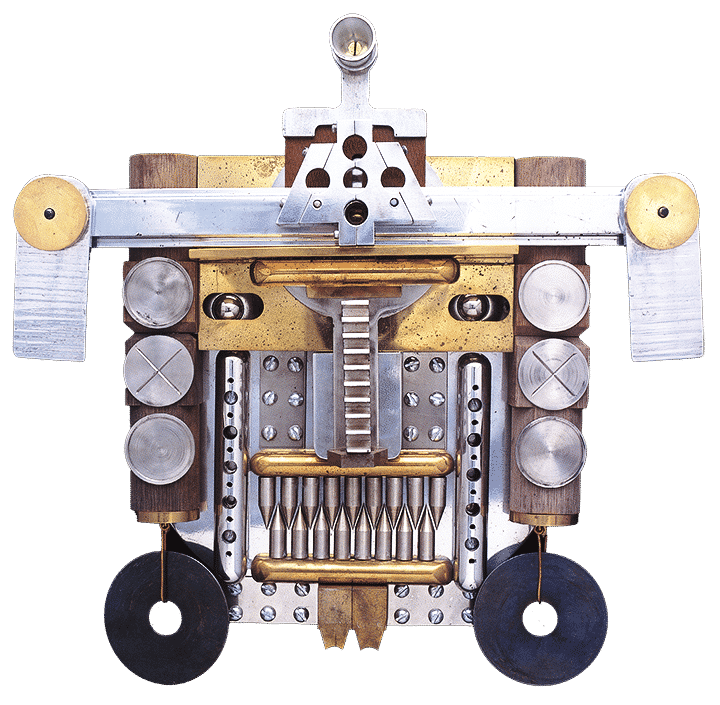
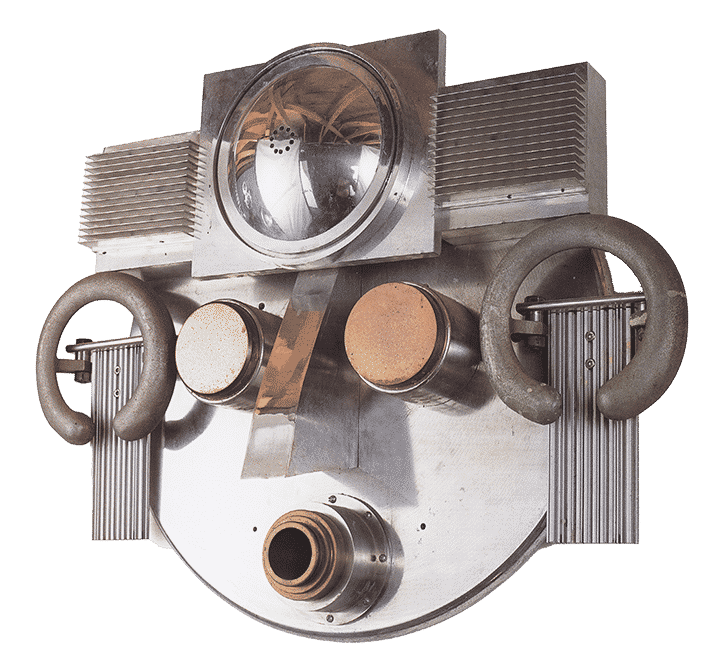
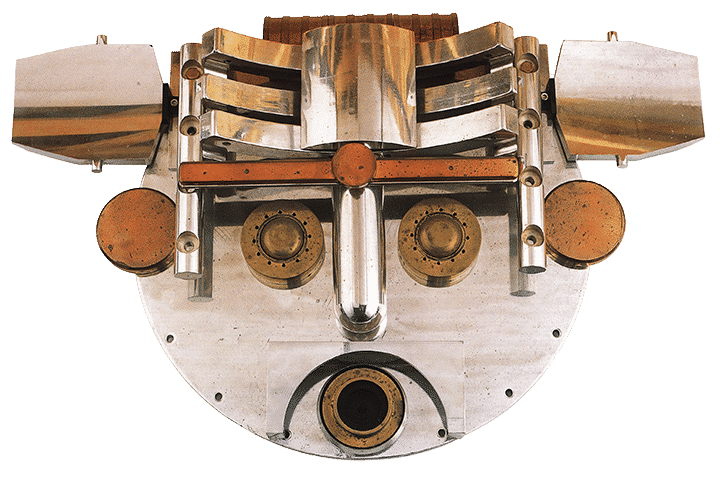
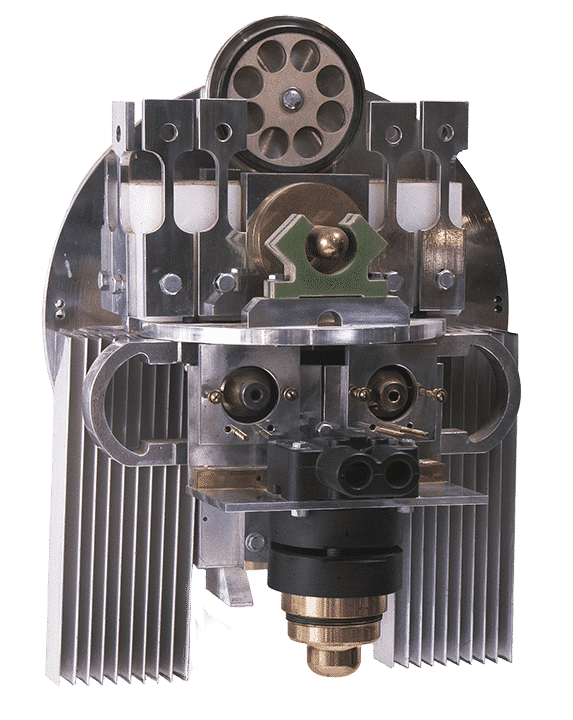
“Swords into Plowshares”
During his lifetime, Tony Price created hundreds of objects of art from the residue of the nuclear weapons laboratories in Los Alamos, New Mexico. His art was and is his activism — an anarchic voice intoning the madness of nuclear power, alchemizing rarified weapons-metals into plowshares of consciousness. He lived many lives and died many deaths to resist destiny. His boldness of consciousness, his art, is a gift that can keep giving.
Masks
James Rutherford on Tony Price
Gallerist, Curator – Santa Fe
Tony Price, the man, was so horrified by the Bomb’s potential to thoroughly alter lives by its mere existence—and to end all life by its actual use—that he had to awaken all those who would be oblivious to obliteration to what he called “our atomic nightmare.”
Tony Price, the artist, used the very tools of possible atomic devastation to open their eyes. This artist, musician, iconoclast and dreamer applied his art to further his doctrine against destruction by dedicating more than thirty years of his life to creating the prophetic and visionary body of work he called Atomic Art. His decision to do so was both urgent and personal:
“If the effort could be made to neutralize the bomb with the same intense effort it took to create the bomb, I know the task could be done, because nothing is impossible.” — Tony Price
He also considered it his responsibility as an artist. To see Price’s Atomic Art is to be struck by the many layers of meaning behind it. His method of turning something widely viewed as extremely negative into something positive, and the sardonic humorinfused into the work invite looking beneath the surface and within the layers to find the artist’s philosophy and understand the context in which the work was created.
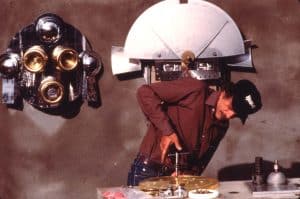
“Tony had a sense of the divine goof and he would occasionally project that into the metal expressions that were formed on his artwork. You’d just look at it and howl because it resonated with the divine goof in you.” — Wavy Gravy
Price himself explained the intended purpose of his alchemic transformations of atomic salvage into iconography of the world’s spiritual and religious traditions:
“Objectively, I know there are vast energy banks of super-good energy available. For each religion is like a giant capacitor in the fourth dimension, holding and dispersing the energy of its followers. Now all I had to do was create symbols corresponding to the energy banks of these religions, using the material of the nuclear weapons energy system. When the vibrations of the nuclear scrap have been shaped into spiritual energy images, a vibrational tunnel or bridge is formed from the religious energy banks to the nuclear weapons banks, and an automatic balance of energies would be established. These sculptures act as valves, bringing the dark and light energies together to balance and thus hold the peace.” — Tony Price

